Beej Se Bharat Tak: Bhola Bhaiya Ki Pehli Kheti Ka Jazba
“Kheti sirf ek kaam nahi hai… yeh toh ek ehsaas hai. Zameen se baat karne ka tareeka hai.”
— Bhola Bhaiya, ek simple kisaan Varanasi ke gaon se.
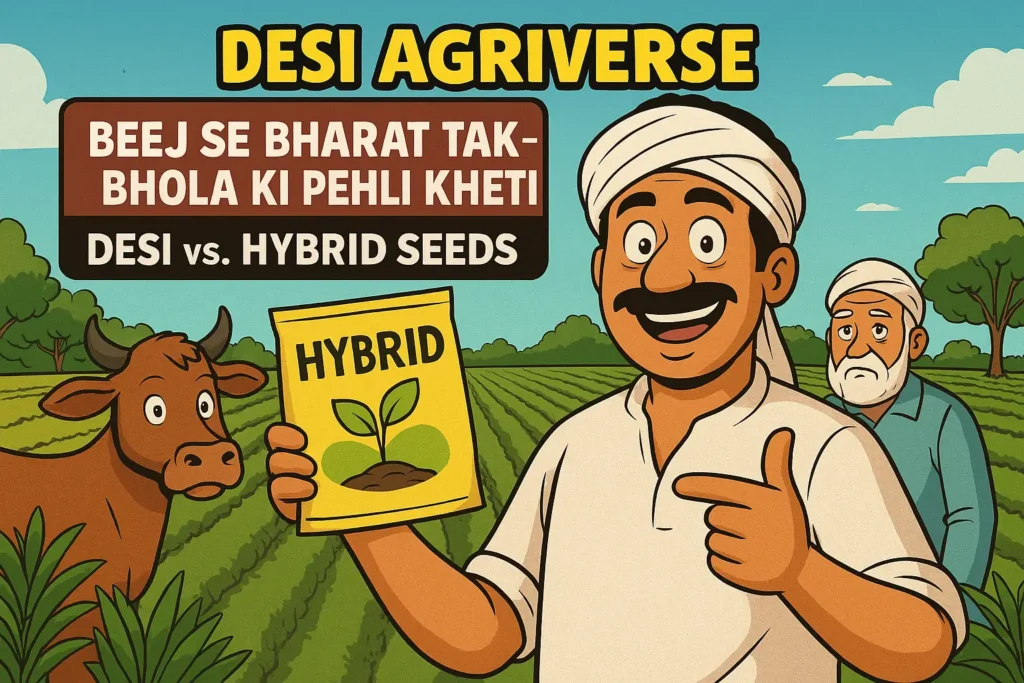
Aaj hm shuru krne jaa rhe India ka pehla interesting, storytelling and educational blog episode (Hybrid vs Desi Seeds) ismei aapko comedy ke saath agriculture ka gyaan milega, jisme bahut se intersting characters se aap ki mulaakat hogi, agr aap hamaara sath dein to mai iss journey ko long samay tk continue rakhu to isko sabhi ke share kariye. Ye blog mainly hinglish mei hoga jisme hmari india ki audience easily relate kr paaye.
Agr aapko koi bhi technical term na samajh aaye to aap mujhse comment mei puchh sktei hai
agr aapko organic farming and modern agriculture ke baare me detail me research-based knowledge chahiye to aap hmaare blog pr visit kr sktei hai category section mei.
To shuruaat krte hai hmaare pehle episode se jismei hmare bhola bhayiya confuse ha ki Hybrid vs Desi Seeds mei se kya choose kre , to bhola bhaiya kya choose krtei hai aur kya sikh dete hai iske liye poora blog padhiye.
🌱 Jab Beej Bana Bhavishya Ka Sanket (Hybrid vs Desi Seeds)
Bhola Bhaiya ka bachpan khet-khalihan mein hi guzar gaya. Subah ka alarm nahi, balki murga bolta tha. Dadaji ke saath milke gobar ka lep lagana, mitti mein nange pair chalna, aur beej bone se pehle mitti se haath jod ke aashirvaad lena – yeh sab uski roz ki zindagi ka hissa tha.
Par jab Bhola ne Krishi Vishwavidyalaya mein admission liya, toh ek naye duniya se uska pehla encounter hua. Har classroom mein ek hi mantra gungunaya ja raha tha – “Hybrid beej, high yield, fast growth, modern technology.”
Ek din Bhola ne socha,
“Jab duniya aage badh rahi hai, toh main hi kyun piche rahoon? Chalo kuch naya try karte hain.”
Aur yeh soch thi uski pehli fasal ki kahani ki shuruaat…
🚜 Part 1: Hybrid Beej – Ek Shuruaati Chamak
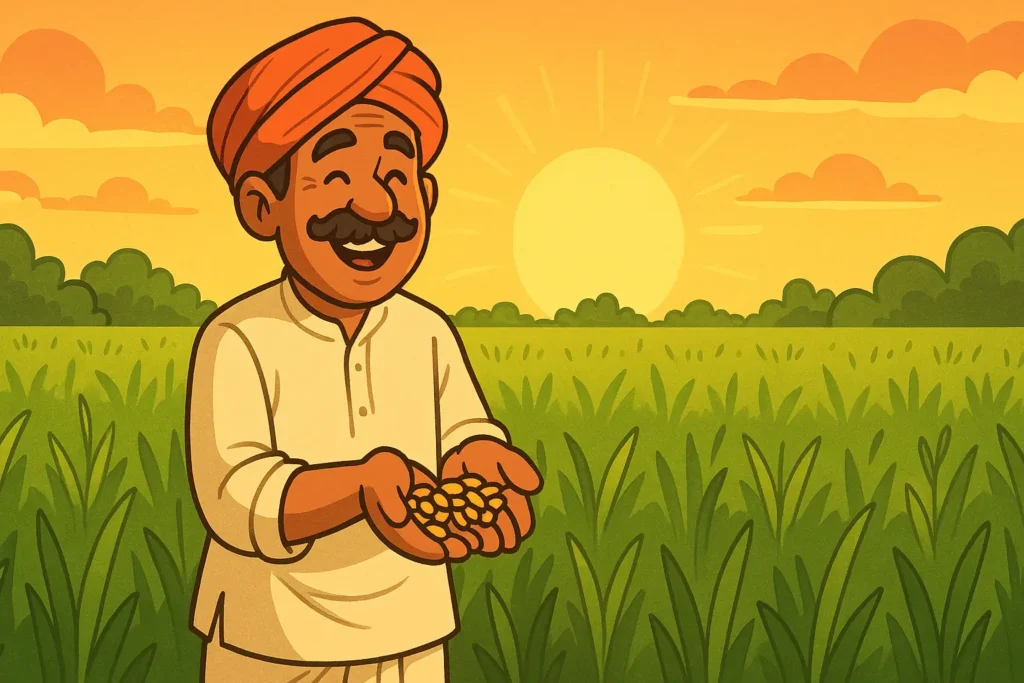
Bhola ne bazaar ke sabse fancy hybrid beej kharide. Shiny packet, lambe-lambe promises – jaise kisi shampoo ka ad ho! Dealer ne kaha,
“Bhaiya, ek baar laga lo… paise double, naam triple!”
Beej boya gaya. Aur Bhola ki aankhon ke saamne har din ek magic ho raha tha. Paudhe aise bade ho rahe the jaise kisi gym trainer ki guidance mein ho – lambai, greenery aur uniformity, sab kuch perfect!
Bhola excited tha,
“Arey wah! Lagta hai ab Bhola sirf Bhaiya nahi, Agro-Tech Entrepreneur ban jayega!”
Lekin har chamakti cheez sona nahi hoti…
Ground Reality: Jab Cost Ne Kha Liya Munafa
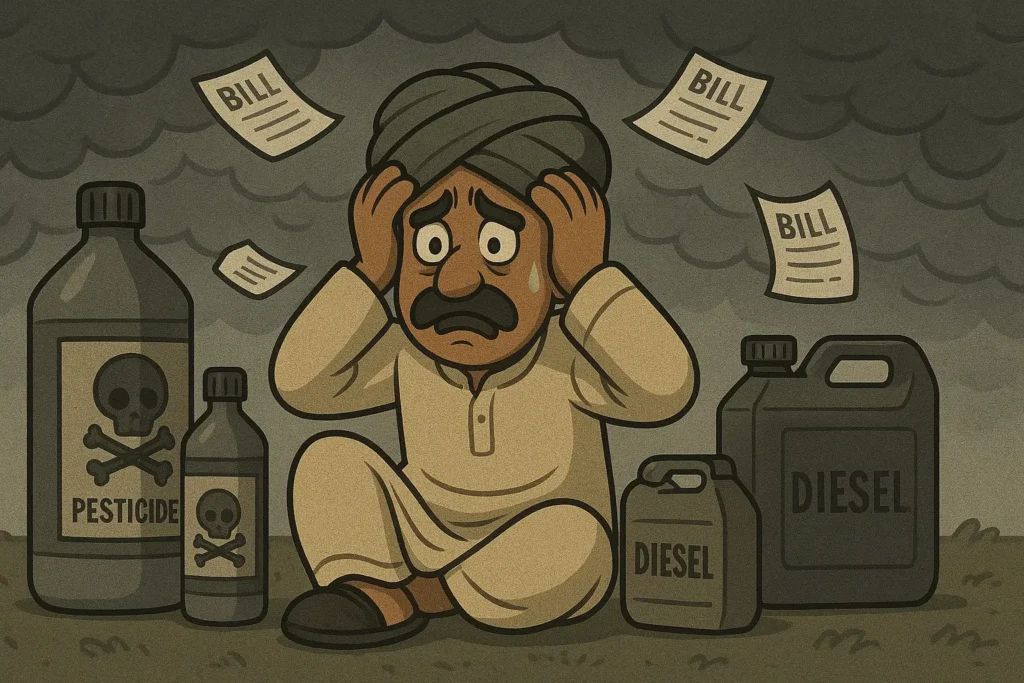
Jaise-jaise crop badhti gayi, Bhola ke kharche bhi ussi speed se badhne lage:
- Har 7 din mein pesticide spray
- 10 din mein urea, DAP ka dose
- Har mahina diesel kharche mein double
- Aur ek din baarish late ho gayi, toh plant stress mein aa gaye
- Phir pest attack ne kaam tamaam kar diya
Harvest ke time pe 20 quintal output mila, lekin input cost ne 70% munafa kha liya. Bhola chabutre pe baith ke sir pakad ke bola:
“Yeh hybrid beej toh VIP hai… usse luxury chahiye. Lekin main toh ek grounded gareeb kisaan hoon!”
🌾 Part 2: Desi Beej – Mitti Se Rishta Wapas
Agli season Bhola ne dadaji ka diya hua 10 saal puraana desi beej nikala.
“Isse kuch khas nahi hoga,” logon ne bola.
Lekin Bhola ka dil keh raha tha,
“Jo beej mitti ke saath palta hai, wahi asli hota hai.”
Khaad banayi gobar se, neem–lasun–mirch ka spray khud banaya, aur irrigation mein mitti ki natural moisture-retaining capacity pe bharosa kiya. Paudhe dheere badhe, par har tufan ka saamna kiya.
- Pest attack pe neem spray ne kaam kiya
- Paudhe chhote par mazboot the
- Output kam tha, lekin mandi mein demand double thi
“Hybrid beej ‘show’ karta hai. Desi beej ‘grow’ karta hai.”
– Bhola Bhaiya ka asardar dialogue
📊 Bhola Bhaiya Ka Beej Comparison (Hybrid vs Desi seeds)
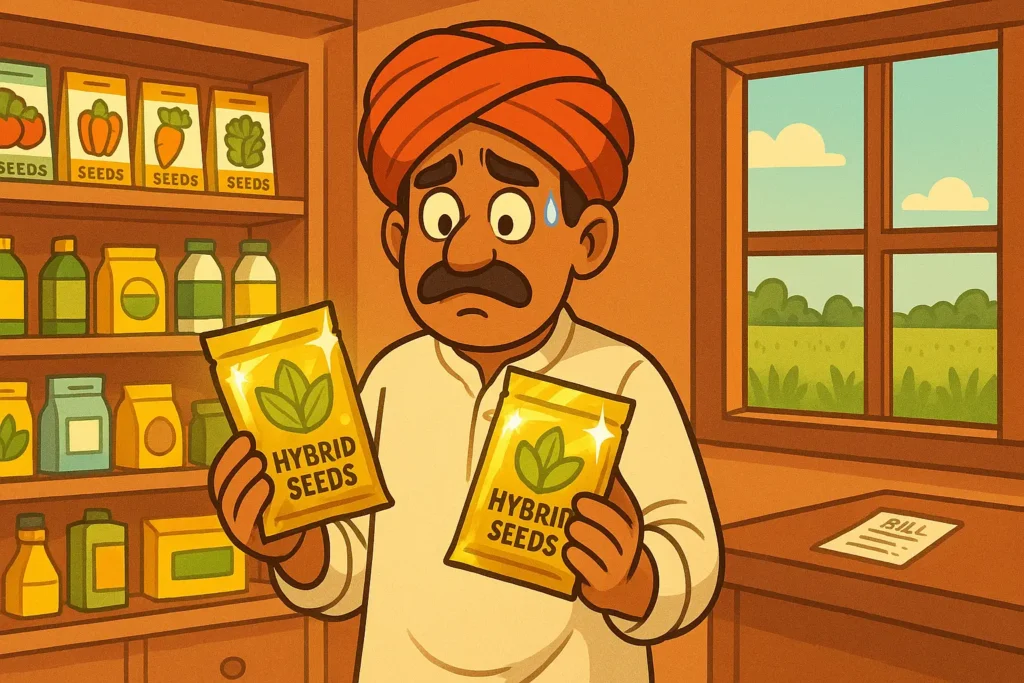
| Feature | Hybrid Beej | Desi Beej |
|---|---|---|
| Yield | High (but needs high input) | Medium, stable & consistent |
| Input Cost | High – chemical, diesel, water | Low – natural khaad, local spray |
| Beej Reuse | No – har saal naya lena padega | yes – save & reuse |
| Disease Resistance | less – foreign genetics | more – local climate adaptable |
| Profit | Conditional – luck based | Sustainable – long-term gain |
| Risk | High – weather/pest sensitive | Low – adaptable & resilient |
| Soil Health | Negative – chemical dependency | Positive – organic, long-term friendly |
Bhola Bhaiya Ki Seekh – “Beej Sirf Fasal Ka Nahin, Soch Ka Bhi Hota Hai”
Akhir mein Bhola ne bola,
“Desi beej aur mitti ka rishta maa aur bacche jaise hota hai – bina bole sab samajh jaate hain.”
Hybrid har jagah sahi nahi hota. Wo fast hai, lekin fragile hai.
Desi slow hai, lekin solid hai.
Agar aap sirf ek season ke profit ke peeche ho, toh hybrid sahi hai.
Par agar aapka dream ek secure, natural aur soil-friendly farming ka hai –
Toh desi beej hi aapka asli partner hai.
Call to Action – Desi AgriVerse Family Ki Taaqat
Agar aap bhi Bhola Bhaiya jaise confusion mein ho – hybrid ya desi beej?
Toh comment karo:
“Main Bhola Bhaiya ke saath hoon!”
Aur agar aapke paas apni farming ki emotional ya funny kahani ho, bhejo humein:
Contact us form ke through
Best kahani agle Desi AgriVerse episode ka part ban sakti hai!
Next Episode Teaser
Guddi Didi Ka Desi Pesticide Formula
Agli baar Bhola Bhaiya se milne aayengi Guddi Didi – jo apne khud ke banaye pesticide spray se na sirf keede bhagati hain, balki apni sabziyon ke rate bhi double kar leti hain! Neem, lasun, lal mirch aur ek special tadka – kya yeh spray hybrid pesticides ko fail kar paayega?
Episode 2:
Thursday Night – 8 PM
Sirf Agriverses pe – Blog aur Youtube dono jagah!
Bonus for Readers:
- Blog ko bookmark karo
- WhatsApp pe apne kisaan bhaiyon ko forward karo
- Instagram pe #DesiAgriVerse use karo
Aap apni kheti ki kahani bhej sktei hai usko hm apni character ki madhyam se prastut krenge next episode mei. ye blog sbhi ko share karo jisko ,bhi ek interesting kahani or comics style mei kheti ki knowledge leni ho.
FAQ Section – Bhola Bhaiya’s First Farming Experience
What is the difference between hybrid seeds and desi (native) seeds?

Hybrid seeds are designed for high yield but require heavy inputs like chemical fertilizers, pesticides, and regular irrigation. Desi seeds are naturally adapted to local climates, grow slower but are more sustainable, resilient, and cost-effective in the long run.
Why did Bhola Bhaiya switch from hybrid to desi seeds?
Bhola Bhaiya initially tried hybrid seeds expecting high returns, but rising input costs and crop failure due to pests and rain delay made him rethink. He chose desi seeds for their natural adaptability, lower cost, and deeper connection with the soil.
Are desi seeds profitable for small farmers in India?
Yes, desi seeds can be profitable for small farmers. Though they give lower yield compared to hybrids, their input costs are much lower, making the profit margin more stable and predictable. They also help improve soil health and reduce long-term dependency on chemicals.
What lesson did Bhola Bhaiya learn from his first hybrid farming experience?
He learned that not all shiny promises lead to profit. Farming success isn’t about fast growth, it’s about understanding your soil, resources, and local climate. The bond with the land matters more than marketing hype.
How can farmers choose between hybrid and desi seeds?
Farmers should consider their soil health, input budget, local climate, and long-term sustainability goals. If the focus is quick profit and there’s support for high inputs, hybrid may work. But for long-term, soil-friendly, and resilient farming, desi seeds are a wiser choice.
Can hybrid and desi seeds be used together in one farm?
Yes, some farmers experiment with mixed cropping – using hybrid seeds for short-term cash crops and desi seeds for long-term soil health. But it requires careful planning and resource management.
Do desi seeds really improve soil health?
Yes, desi seeds are usually grown with organic inputs and traditional techniques that allow soil microbes to thrive, unlike hybrid farming which often depends on chemicals that degrade soil over time.
Is Bhola Bhaiya’s story based on real farming experiences?
Yes! While the characters are comic-style and fun, their experiences are inspired by real farmers across India who are shifting back to natural, sustainable farming practices.

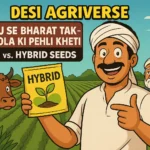
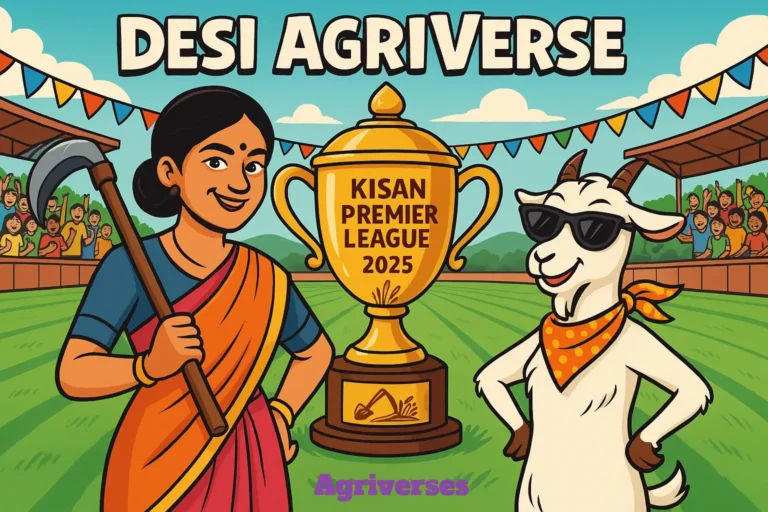
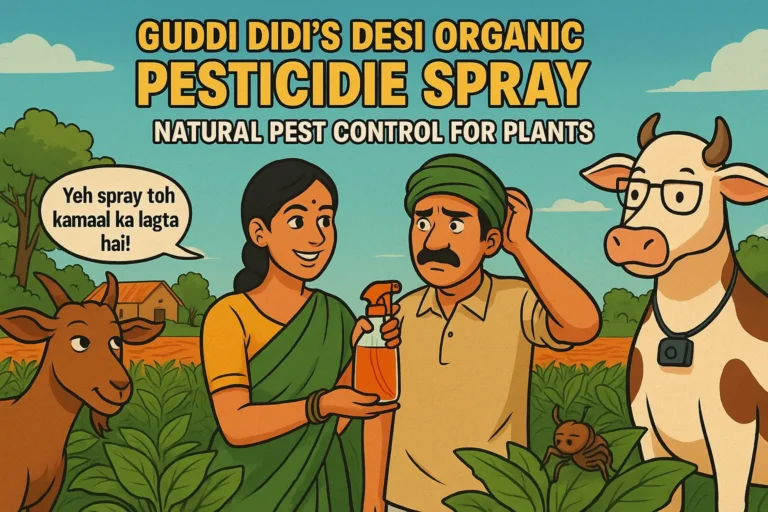
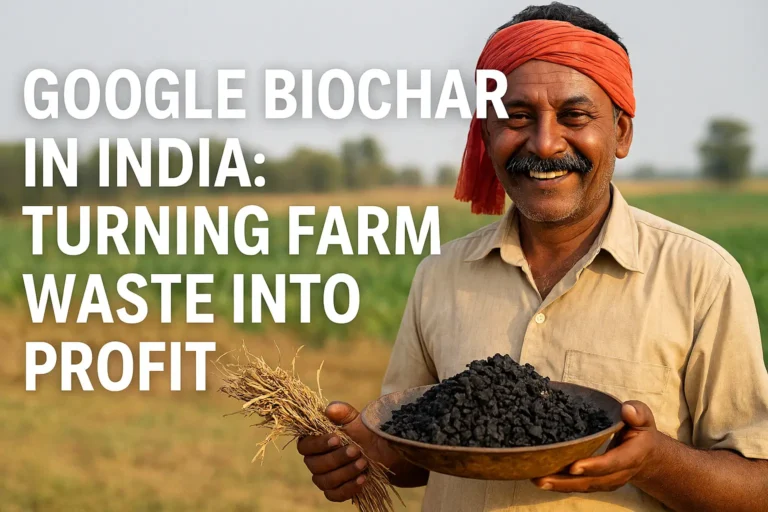
One Comment